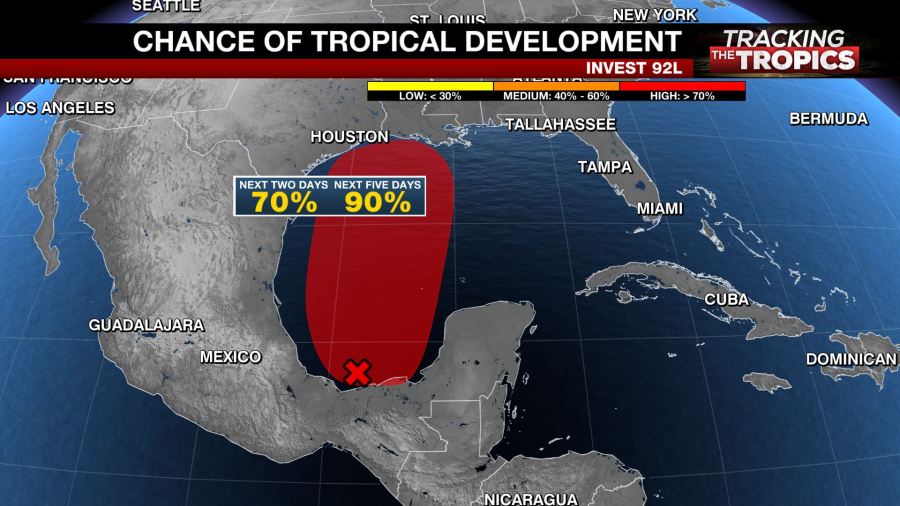TAMPA, Fla. (WFLA) — Tropical development continues to be more likely in the Bay of Campeche – in the southwestern Gulf of Mexico – by the end of the week.
An area of showers and storms has been monitored by the National Hurricane Center for the past four days and a tropical depression will likely form by Thursday night or Friday.

Currently, the area of low pressure continues to meander in the Bay of Campeche and will continue to do so for the next 24 hours or so with little change in organization. By Thursday night or Friday, the low pressure will begin to drift north into the Gulf of Mexico.
It will likely stay a weaker system as it moves north through the western and central Gulf of Mexico. Abundant tropical moisture will accompany the system as it moves ashore somewhere along the northern Gulf Coast states.
Rainfall accumulation totals could exceed six inches in localized spots but it is too soon to tell where. The moisture will travel inland and to the east bringing the heavy rain to areas in Mississippi and northern Georgia.
The main hazards with this system will likely be flash flooding concerns. Wind impacts will be minimal as the developing system is not expected to be a strong storm. As with any landfalling tropical system, there will be a low threat threat for an isolated tornado to spin up as well as waterspouts moving ashore in the stronger rain bands.

Storm surge heights will be on the lower side with this being a weaker storm but two to four feet of water level rise could occur just to the right of where the storm makes landfall.
Tropical Storm Bill
The second named storm of the season formed off the coast of the Carolinas late Monday. Tropical Storm Bill formed quickly but was also short lived. It moved northeast in the Atlantic away from the United States and was never a threat to land. It is now post-tropical and the National Hurricane Center is no longer issuing advisories.
No other areas in the Atlantic are being monitored for tropical development in the Gulf of Mexico, Caribbean Sea or the open Atlantic Ocean.






